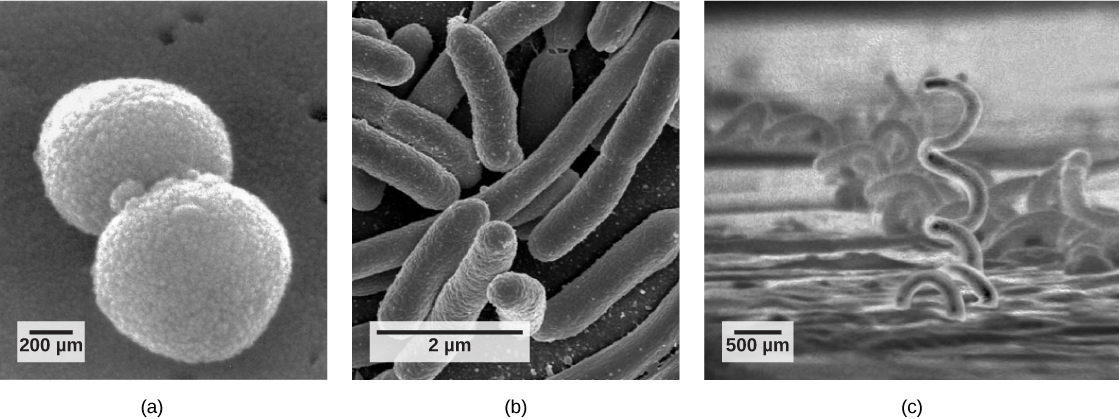| << Chapter < Page | Chapter >> Page > |
Watch a video showing the Director of the Planetary Science Division of NASA discussing the implications that the existence extremophiles on Earth have on the possibility of finding life on other planets in our solar system, such as Mars.
Until a couple of decades ago, microbiologists thought of prokaryotes as isolated entities living apart. This model, however, does not reflect the true ecology of prokaryotes, most of which prefer to live in communities where they can interact. A biofilm is a microbial community held together in a gummy-textured matrix, consisting primarily of polysaccharides secreted by the organisms, together with some proteins and nucleic acids. Biofilms grow attached to surfaces. Some of the best-studied biofilms are composed of prokaryotes, although fungal biofilms have also been described.
Biofilms are present almost everywhere. They cause the clogging of pipes and readily colonize surfaces in industrial settings. They have played roles in recent, large-scale outbreaks of bacterial contamination of food. Biofilms also colonize household surfaces, such as kitchen counters, cutting boards, sinks, and toilets.
Interactions among the organisms that populate a biofilm, together with their protective environment, make these communities more robust than are free-living, or planktonic, prokaryotes. Overall, biofilms are very difficult to destroy, because they are resistant to many of the common forms of sterilization.
There are many differences between prokaryotic and eukaryotic cells. However, all cells have four common structures: a plasma membrane that functions as a barrier for the cell and separates the cell from its environment; cytoplasm, a jelly-like substance inside the cell; genetic material (DNA and RNA); and ribosomes, where protein synthesis takes place. Prokaryotes come in various shapes, but many fall into three categories: cocci (spherical), bacilli (rod-shaped), and spirilla (spiral-shaped) ( [link] ).

Recall that prokaryotes ( [link] ) are unicellular organisms that lack organelles surrounded by membranes. Therefore, they do not have a nucleus but instead have a single chromosome—a piece of circular DNA located in an area of the cell called the nucleoid. Most prokaryotes have a cell wall lying outside the plasma membrane. The composition of the cell wall differs significantly between the domains Bacteria and Archaea (and their cell walls also differ from the eukaryotic cell walls found in plants and fungi.) The cell wall functions as a protective layer and is responsible for the organism’s shape. Some other structures are present in some prokaryotic species, but not in others. For example, the capsule found in some species enables the organism to attach to surfaces and protects it from dehydration. Some species may also have flagella (singular, flagellum) used for locomotion, and pili (singular, pilus) used for attachment to surfaces and to other bacteria for conjugation. Plasmids, which consist of small, circular pieces of DNA outside of the main chromosome, are also present in many species of bacteria.

Notification Switch
Would you like to follow the 'Concepts of biology' conversation and receive update notifications?